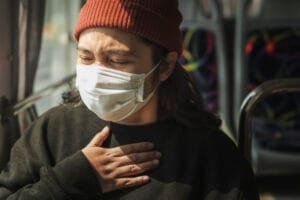Introduction
The WHO declares Mpox outbreak a Public Health Emergency of International Concern (PHEIC) in light of the growing global concerns. This declaration marks a pivotal moment in the fight against this zoonotic disease, emphasizing the urgency for international cooperation, heightened awareness, and robust public health measures. In this article, we will explore the implications of this declaration, delve into the causes and symptoms of Mpox, and examine the global response to this emerging health threat.Understanding Mpox
What is Mpox?
The virus that causes monkeypox is the source of pox, which was once known as monkeypox. It belongs to the same family of viruses as smallpox, though Mpox is less severe. The disease was first identified in monkeys in 1958, which led to its name, it is more commonly transmitted from rodents and other small mammals to humans.History and Origins of the Virus
The monkeypox virus was first discovered in a laboratory setting when it was isolated from monkeys in Denmark. However, the first human cases were not identified until 1970 in the Democratic Republic of Congo. Since then, sporadic outbreaks have occurred in various parts of Africa, primarily in rural areas where people live close to wildlife.How Mpox Spreads
Mpox is transmitted to humans through close contact with an infected animal or human. The virus can spread through direct contact with bodily fluids, respiratory droplets, or contaminated objects like bedding and clothing. Human-to-human transmission occurs mainly through prolonged face-to-face contact, making it less contagious than some other viruses.Symptoms and Diagnosis of Mpox
Early Symptoms
The initial symptoms of Mpox are similar to those of other viral infections and include fever, headache, muscle aches, fatigue, and swollen lymph nodes. These symptoms typically appear 5 to 21 days after exposure to the virus.Progression of the Disease
After the initial symptoms, a characteristic rash develops, usually starting on the face before spreading to other parts of the body. The rash goes through several stages, from flat, red spots (macules) to raised bumps (papules), vesicles, pustules, and finally scabs. The disease usually lasts for 2 to 4 weeks, with most patients recovering fully.Severe Cases and Complications
While Mpox is generally less severe than smallpox, it can lead to serious complications, especially in young children, pregnant women, and immunocompromised individuals. Complications can include secondary bacterial infections, pneumonia, sepsis, and in rare cases, encephalitis.How Mpox is Diagnosed
Diagnosis of Mpox is typically based on the patient’s symptoms and history of exposure. Laboratory tests, such as polymerase chain reaction (PCR), can confirm the presence of the monkeypox virus. Healthcare providers may also perform blood tests to check for antibodies against the virus.Causes of Mpox
Primary Causes
Mpox is primarily caused by exposure to the monkeypox virus, which is found in certain animals, including rodents and primates. The respiratory system, broken skin, and mucous membranes (mouth, nose, or eyes) are all possible entry points for the virus into the body.Risk Factors for Transmission
Individuals who live in or travel to areas where Mpox is endemic are at a higher risk of contracting the virus. Activities that increase the likelihood of exposure, such as hunting, handling wildlife, or coming into contact with infected individuals, also elevate the risk of transmission.Impact of Animal-Human Interaction
Human activities, such as deforestation and hunting, have increased the likelihood of contact with wildlife that carries the monkeypox virus. This increased interaction between humans and animals has been a significant factor in the emergence and spread of Mpox.Global Response to the Mpox Outbreak
WHO’s Role in Managing the Outbreak
The WHO has been at the forefront of the global response to the Mpox outbreak. By declaring it a PHEIC, the WHO has highlighted the need for urgent international collaboration to contain the virus. This declaration also helps mobilize resources and raise awareness about the outbreak.International Cooperation and Efforts
Countries around the world have been working together to combat the Mpox outbreak. This includes sharing information about the virus, coordinating public health measures, and providing support to affected regions. International cooperation is essential for controlling the spread of Mpox and preventing future outbreaks.Public Health Measures Implemented
Several public health measures have been implemented to control the spread of Mpox, including quarantine and isolation of infected individuals, contact tracing, and vaccination of high-risk populations. Public health campaigns have also been launched to educate people about the symptoms and prevention of Mpox.Challenges Faced by Global Health Authorities
Global health authorities face several challenges in managing the Mpox outbreak, including limited resources, misinformation, and the logistical difficulties of distributing vaccines and medical supplies. Addressing these challenges requires ongoing international cooperation and support.Treatment and Management of Mpox
Current Treatment Options
There is currently no specific antiviral treatment for Mpox. However, supportive care, including hydration, pain management, and treatment of secondary infections, is crucial for managing the disease. In severe cases, hospitalization may be required.Use of Antiviral Medications
Although no antiviral medications have been specifically approved for Mpox, drugs like Tecovirimat, which were developed for smallpox, may offer some benefit. Clinical trials are ongoing to determine their efficacy in treating Mpox.Supportive Care
Supportive care is essential for managing the symptoms of Mpox. This includes providing fluids to prevent dehydration, managing fever and pain, and treating any secondary bacterial infections. Patients with severe symptoms may require additional medical interventions.Importance of Isolation and Quarantine
Isolation of infected individuals and quarantine of their close contacts are critical measures for preventing the spread of Mpox. These measures, combined with public health campaigns and contact tracing, can significantly reduce the transmission of the virus.Prevention Strategies
Reducing the Risk of Transmission
Preventing Mpox involves reducing the risk of transmission from animals to humans and from person to person. This includes avoiding contact with wild animals that may carry the virus, practicing good hygiene, and avoiding close contact with infected individuals.Public Education and Awareness
Raising public awareness about Mpox is crucial for preventing its spread. Educational campaigns should focus on how the virus is transmitted, the symptoms to look out for, and the steps people can take to protect themselves.Role of Vaccination
Vaccination plays a crucial role in preventing the spread of Mpox. While there is no specific vaccine for Mpox, the smallpox vaccine has been found to offer some protection. The WHO has recommended that high-risk populations, such as healthcare workers, be vaccinated.Conclusion
The WHO’s declaration of the Mpox outbreak as a Public Health Emergency of International Concern is a significant step in addressing this global health threat. The outbreak underscores the importance of international cooperation, robust healthcare systems, and ongoing research to prevent and control the spread of zoonotic diseases like Mpox. By staying informed, practicing good hygiene, and supporting public health initiatives, we can all play a role in preventing the further spread of this virus. Continued vigilance and global collaboration are essential to ensure that future outbreaks are managed effectively and that we are better prepared for similar health challenges.






1 thought on “WHO Declares Mpox Outbreak a Public Health Emergency: Understanding the Threat, Symptoms, and Global Response”
Hey, that was informative I really appreciate your efforts.